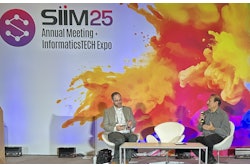U.S. and European experts have proposed a joint practice guideline for use in nuclear medicine on diagnostics and therapy (theranostics) of meningiomas, as published June 20 in the European Journal of Nuclear Medicine and Molecular Imaging.
The procedure standards focus specifically on the technical aspects of somatostatin receptor (SSTR) ligands, which can be used in both PET imaging and treatment of meningiomas, and are meant to ensure effective use of the approach, noted lead author Nathalie Albert, of Ludwig Maximilian University in Munich.
“The clinical utilization of SSTR-directed PET/CT imaging and [peptide receptor radionuclide therapy, or PRRT] among patients with meningioma has shown a consistent rise in Europe and the U.S.,” the group wrote.
Theranostics consists of using an imaging tracer for in-vivo visualization of a tumor-specific target, which is then addressed by the same or analogous molecule labeled with a therapeutic radionuclide instead of the diagnostic radionuclide.
Experts in the field have described the concept with the expression, “See what you treat and treat what you see.”
The approach is already successfully used in neuroendocrine tumor patients and initial PRRT studies show encouraging results with favorable outcomes in patients with treatment-refractory meningioma, the group noted. Yet randomized clinical trials on the efficacy of PRRT in meningiomas are missing and PRRT is not yet approved for meningioma patients by U.S. or European medical agencies, they added.
Thus, the authors developed this practice guideline with the following goals:
- To assist healthcare professionals, particularly nuclear medicine practitioners, in recommending, interpreting, and reporting the results of brain SSTR-PET imaging in meningiomas.
- To define procedure standards for the application of SSTR PET imaging in meningiomas and SSTR-targeted PRRTs in clinical practice and clinical trials in order to facilitate harmonization of data acquisition and treatment protocols across centers.
The guideline covers indications and contraindications, qualifications and responsibilities of personnel -- including physicists and technologists -- procedures and specifications, documentation and reporting, equipment specifications, and quality control improvement.
“In order to bring SSTR-directed PET/CT imaging as well as SSTR-directed radionuclide therapy of meningiomas into daily clinical practice and to increase the evidence level of this highly promising theranostic approach, adequately designed and controlled prospective multicenter trials are strongly encouraged,” the group wrote.
The authors represent the European Association of Nuclear Medicine (EANM), the Society of Nuclear Medicine and Molecular Imaging (SNMMI), the European Association of Neurooncology (EAN), and the PET task force of the Response Assessment in Neurooncology Working Group (RANO).
The full article is available here.




















